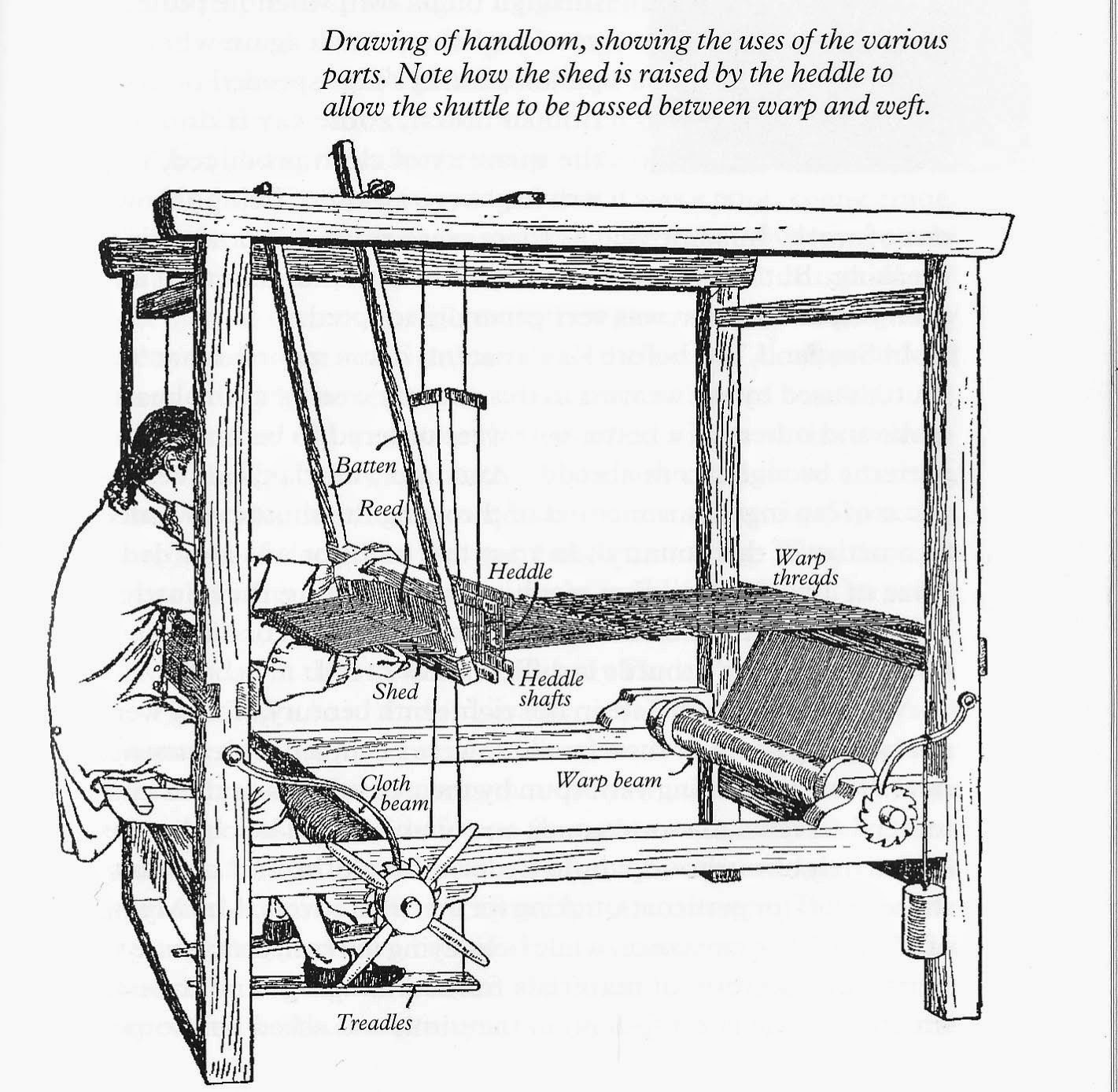Half-Drop,
Also known, in the textile industry, as a ‘step-half’. A kind of repeat in which the unit is repeated at a given distance, not directly horizontal but stepped down half its vertical dimension.
Also known, in the textile industry, as a ‘step-half’. A kind of repeat in which the unit is repeated at a given distance, not directly horizontal but stepped down half its vertical dimension.
Hand Made Paper,
Hand Made Paper is a slow individual process whereby each sheet is formed by an artisan on a mould and deckle.
Hand Made Paper is a slow individual process whereby each sheet is formed by an artisan on a mould and deckle.
Hand Paper Making,
The process of making paper by hand. Interwoven fibres are deposited on a screen, by passing the screen through a water bath containing suspended fibres. This mat of fibres is dried and pressed between rollers to make a sheet of paper. Most paper is made from wood or plant pulp, other fibrous material like cotton and textiles can also be used. Making paper out of pulp of old papers is called recycling paper.
The process of making paper by hand. Interwoven fibres are deposited on a screen, by passing the screen through a water bath containing suspended fibres. This mat of fibres is dried and pressed between rollers to make a sheet of paper. Most paper is made from wood or plant pulp, other fibrous material like cotton and textiles can also be used. Making paper out of pulp of old papers is called recycling paper.
Hand Spinning,
Yarn can be hand spun in two ways - cotton fibre to yarn by hand, cotton to sliver by mechanical process which is then spun by hand in various thicknesses. Srikakulam in North coastal Andhra remains the only hand spinning belt in the country, where fine yarn up-to 100s count is spun. The Process of converting cotton fibre to yarn is complex and the strength and fineness of yarn is dependent on the staple length of the fibre and the skill of the spinner. Yarn is less stressed in hand spinning process.
Yarn can be hand spun in two ways - cotton fibre to yarn by hand, cotton to sliver by mechanical process which is then spun by hand in various thicknesses. Srikakulam in North coastal Andhra remains the only hand spinning belt in the country, where fine yarn up-to 100s count is spun. The Process of converting cotton fibre to yarn is complex and the strength and fineness of yarn is dependent on the staple length of the fibre and the skill of the spinner. Yarn is less stressed in hand spinning process.
Handloom,
Hand Loom is a loom that is used to weave fabrics without the use of electricity. The manipulation of the foot pedals to lift the warp has to be in sync with the throwing of the shuttle which carries the weft yarn. A perfect weave demands coordination between mind and body. The weaver achieves a harmony of motion and rhythm to create a unique product. Depending on the complexity of design, a weaver between half a meter to five meters of fabric a day.
Hand Loom is a loom that is used to weave fabrics without the use of electricity. The manipulation of the foot pedals to lift the warp has to be in sync with the throwing of the shuttle which carries the weft yarn. A perfect weave demands coordination between mind and body. The weaver achieves a harmony of motion and rhythm to create a unique product. Depending on the complexity of design, a weaver between half a meter to five meters of fabric a day.
Handspun cotton,
Cotton thread made locally using simple non-mechanical apparatus such as a spindle or a spinning-wheel.
Cotton thread made locally using simple non-mechanical apparatus such as a spindle or a spinning-wheel.
Handspun thread,
Locally grown animal or plant fibres, usually cotton or silk, spun into yarn by hand, using a spindle or spinning-wheel.
Locally grown animal or plant fibres, usually cotton or silk, spun into yarn by hand, using a spindle or spinning-wheel.
Hank,
Standard measure for a length of cotton yarn is "hank". A hank measures 840 yards. Hank yard is used typically in hand loom production as opposed to cone yarn which is used in mill production. Hank yarn is available from a coarse 2's count to a fine 120's count based on the fiber length of cotton.
Standard measure for a length of cotton yarn is "hank". A hank measures 840 yards. Hank yard is used typically in hand loom production as opposed to cone yarn which is used in mill production. Hank yarn is available from a coarse 2's count to a fine 120's count based on the fiber length of cotton.
Hard dot,
In photogravure, the system in which the cells are of differing widths but of the same depth.
In photogravure, the system in which the cells are of differing widths but of the same depth.
Hashia,
A Persian/Arabic word referring to the decorative borders or outlines placed as boundary to the written text. In kantha needlework it is the outline formation of descending stitches.
A Persian/Arabic word referring to the decorative borders or outlines placed as boundary to the written text. In kantha needlework it is the outline formation of descending stitches.
Hath ari,
Hand-operated awl for embroidery. Same as ari but as it is used by hand it is generally called by this name.
Hand-operated awl for embroidery. Same as ari but as it is used by hand it is generally called by this name.


